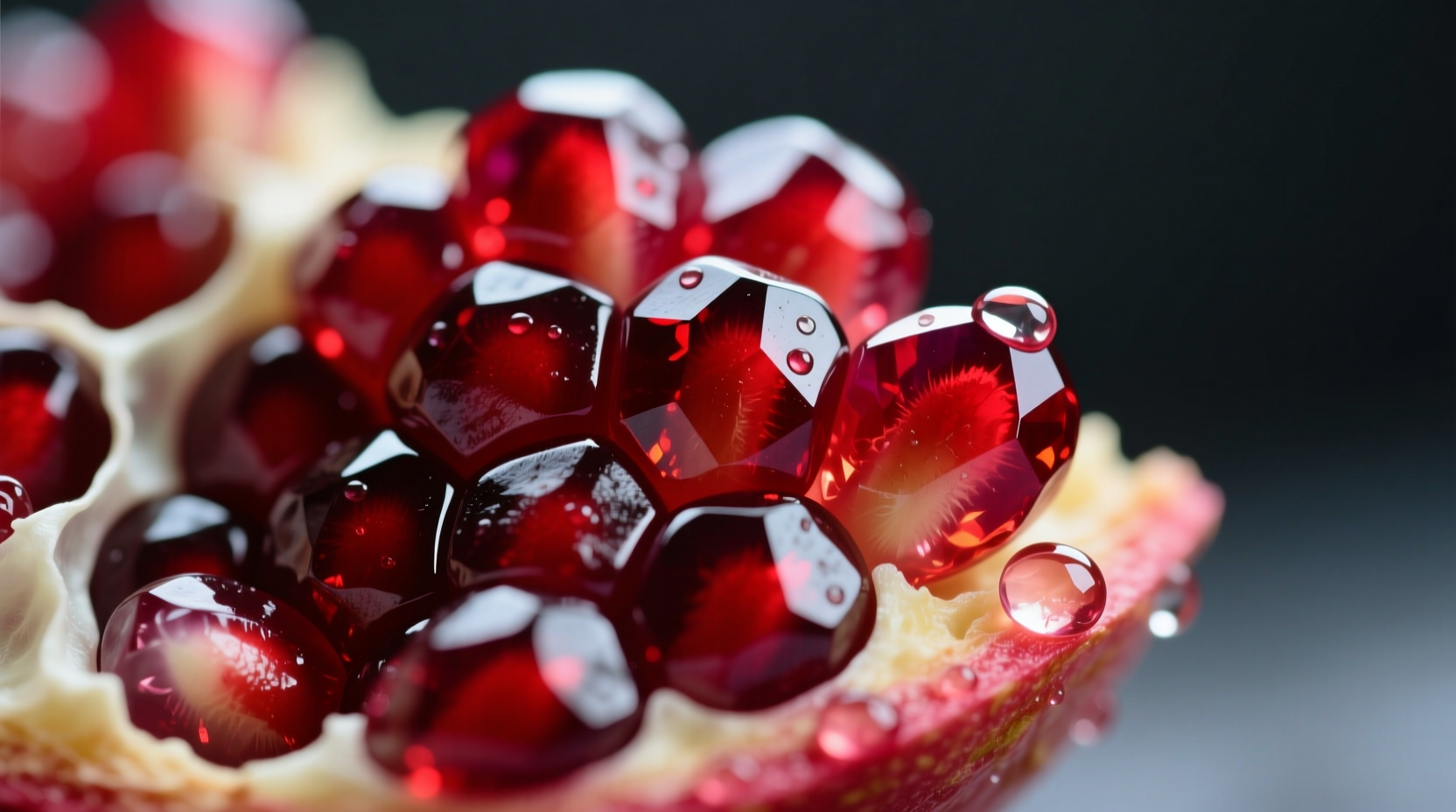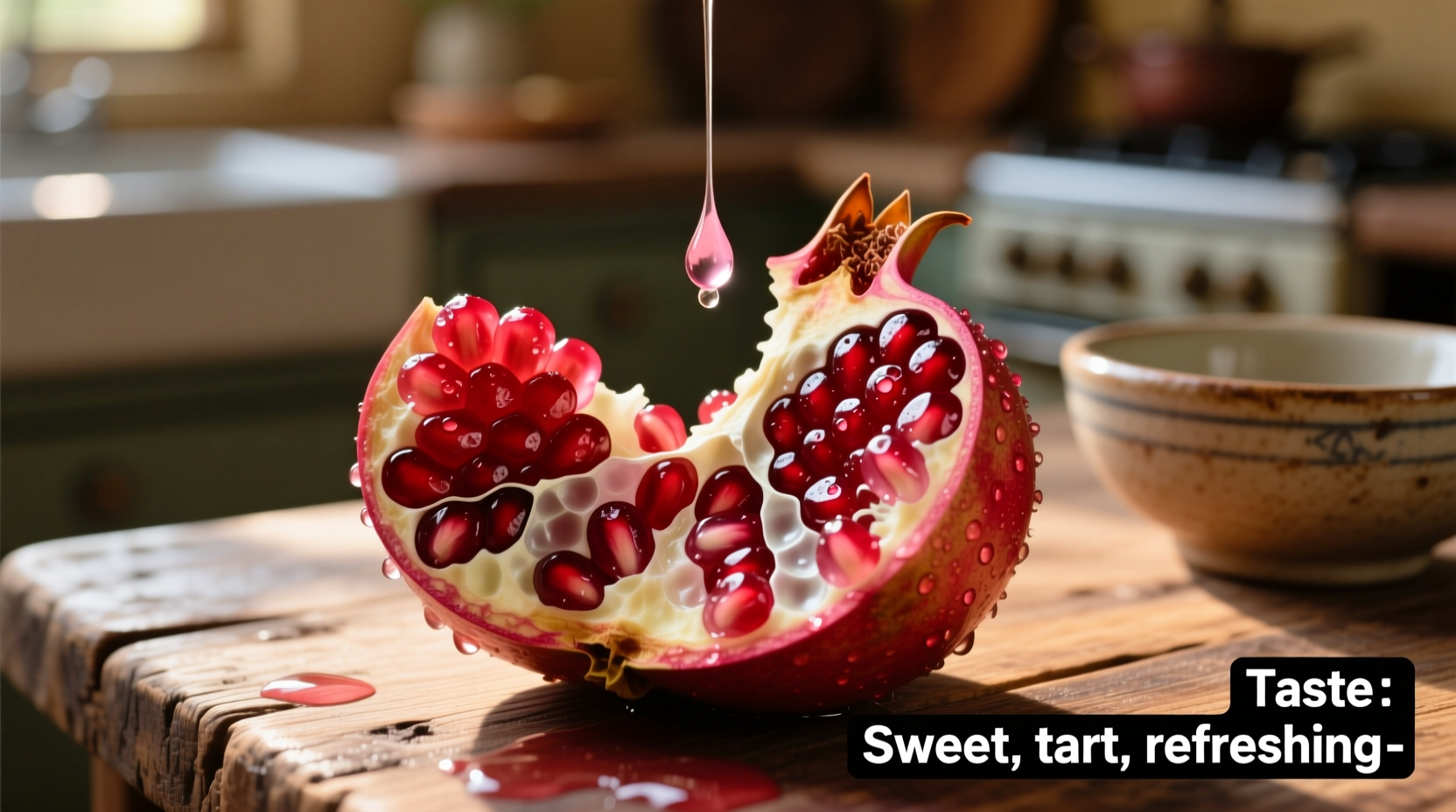Ever bitten into a pomegranate aril and wondered why this ancient fruit creates such a unique sensory experience? Understanding what pomegranate tastes like goes beyond simple sweet or sour descriptions—it's a multidimensional flavor journey that has captivated palates for thousands of years across Mediterranean and Middle Eastern cultures. This comprehensive guide reveals exactly what to expect from this jewel-toned fruit, how various factors influence its distinctive taste, and practical tips to maximize your pomegranate enjoyment.
The Signature Pomegranate Flavor Profile
When you bite into a ripe pomegranate aril (the juicy seed casing), you'll experience an immediate burst of flavor that combines:
- Sweet-tart balance—similar to cranberries but less aggressively sour
- Citrus undertones—reminiscent of red grapefruit with a hint of orange
- Tropical notes—subtle hints of passion fruit and guava
- Floral accents—a delicate perfume that lingers on the palate
The texture plays a crucial role in the overall what do pomegranate taste like experience. Each translucent aril contains a crunchy seed that provides a satisfying contrast to the juicy exterior. This dual-texture element creates a more complex sensory experience than most fruits, with the seed contributing a mild, slightly nutty flavor that rounds out the tart-sweet profile.

How Ripeness Transforms Pomegranate Flavor
Unlike many fruits, pomegranates don't continue ripening after harvest, making selection critical for optimal taste. The flavor evolution follows a clear progression:
| Ripeness Stage | Flavor Characteristics | Visual Indicators |
|---|---|---|
| Underripe | Excessively tart, almost sour, with minimal sweetness | Bright red skin, firm and rounded shape |
| Optimally ripe | Perfect sweet-tart balance with complex floral notes | Slightly angular shape, deep ruby color, leathery skin |
| Overripe | Muted flavor, potentially fermented notes, mushy texture | Dull color, soft spots, may feel lighter than expected |
This ripeness timeline directly impacts your pomegranate taste experience. According to agricultural research from the University of California's Department of Plant Sciences, optimally ripe pomegranates contain the ideal ratio of sugars (primarily glucose and fructose) to organic acids (mainly citric and malic acid), creating that signature balanced flavor profile. Their studies show that the sugar-to-acid ratio shifts dramatically during ripening, with the most desirable eating quality occurring when the fruit reaches full color but before it becomes overripe.
Regional Varieties and Their Distinct Flavor Notes
Not all pomegranates taste the same—different cultivars offer unique flavor experiences that affect what pomegranate tastes like in your mouth:
- Wonderful (most common commercial variety)—Bold tartness with pronounced cranberry notes, best for juicing
- Acco (Israeli variety)—Exceptionally sweet with minimal tartness, large arils perfect for eating fresh
- Mollar de Elche (Spanish)—Complex flavor with honeyed sweetness and subtle spice notes
- Parfianka (Russian)—Intense floral aroma with balanced sweet-tart profile, considered premium for fresh consumption
These regional differences explain why your pomegranate flavor experience might vary significantly depending on where and when you purchase the fruit. The USDA's Agricultural Research Service has documented how growing conditions—including soil composition, climate, and irrigation practices—affect the development of flavor compounds in pomegranates. Their research shows that fruits grown in Mediterranean climates with hot days and cool nights develop more complex flavor profiles than those grown in consistently warm conditions.
How to Select the Sweetest Pomegranate
Choosing the right pomegranate ensures you experience the best possible what do pomegranate taste like scenario. Follow these professional selection tips:
- Weight test—Heavier fruits contain more juice and typically have better flavor development
- Color check—Deep, uniform red or burgundy indicates full ripeness (some varieties like 'Pink Satin' remain pink when ripe)
- Shape observation—Slightly angular or squared shapes suggest optimal ripeness rather than perfectly round
- Sound test—Gently tap the fruit; a metallic sound indicates plump, juicy arils ready for harvest
Seasonality significantly impacts flavor quality. In the Northern Hemisphere, peak season runs from September to February, when you'll find pomegranates with the most developed pomegranate taste profile. During off-season months, imported fruits may lack the full flavor complexity of locally harvested varieties at their peak.
Maximizing Flavor When Preparing Pomegranate
Your preparation technique dramatically affects the what pomegranate tastes like experience. Follow these steps to preserve optimal flavor:
- Cut horizontally around the equator rather than vertically to minimize bitter membrane contact
- Submerge in water while separating arils to prevent bitter tannins from the white pith transferring to the juice
- Use ceramic or plastic tools—metal can react with pomegranate compounds and create off-flavors
- Consume within 2-3 days of preparation for peak flavor (the taste degrades as enzymes break down)
Professional chefs note that temperature affects perception of pomegranate flavor characteristics. Serving slightly chilled enhances the refreshing tartness, while bringing to room temperature allows more complex floral notes to emerge. This temperature sensitivity explains why pomegranate can taste dramatically different depending on how you serve it.
Common Flavor Misconceptions Clarified
Several myths persist about what pomegranate tastes like that deserve clarification:
- Myth: All pomegranates are extremely sour
Reality: Properly ripe varieties like 'Acco' can be predominantly sweet with only subtle tartness - Myth: The seeds are bitter and should be avoided
Reality: The crunchy seed adds a pleasant nutty dimension and contains beneficial compounds - Myth: Pomegranate juice tastes identical to the fresh arils
Reality: Juicing releases bitter compounds from the membranes, creating a more astringent flavor
Understanding these distinctions helps set accurate expectations for your pomegranate taste experience. The fruit's complex chemistry—including anthocyanins, punicalagins, and various organic acids—creates a flavor profile that's difficult to replicate with other ingredients, making fresh consumption the best way to appreciate its unique characteristics.
Perfect Pairings That Enhance Pomegranate Flavor
Certain ingredients beautifully complement the pomegranate flavor profile without overwhelming its delicate balance:
- Fresh mint—enhances the fruit's natural brightness
- Lime zest—amplifies citrus notes while adding complexity
- Honey or maple syrup—balances tartness in underripe specimens
- Feta or goat cheese—creates a classic sweet-savory contrast
- Ginger—adds warmth that complements pomegranate's floral notes
For the most authentic pomegranate taste experience, try the Middle Eastern combination of pomegranate arils with sumac and toasted pine nuts—a pairing that has been enjoyed for centuries and showcases the fruit's versatility beyond simple fresh consumption.











 浙公网安备
33010002000092号
浙公网安备
33010002000092号 浙B2-20120091-4
浙B2-20120091-4